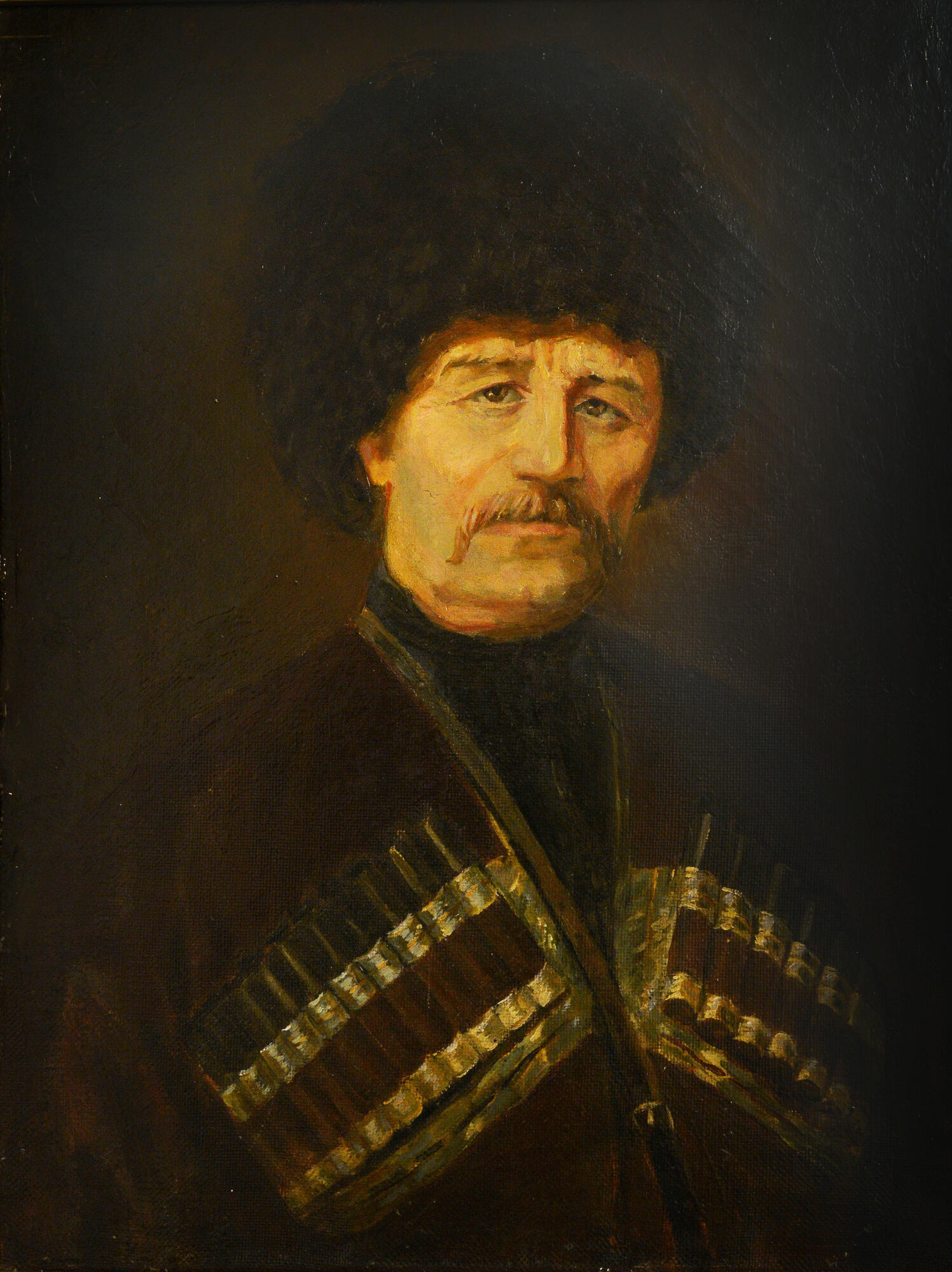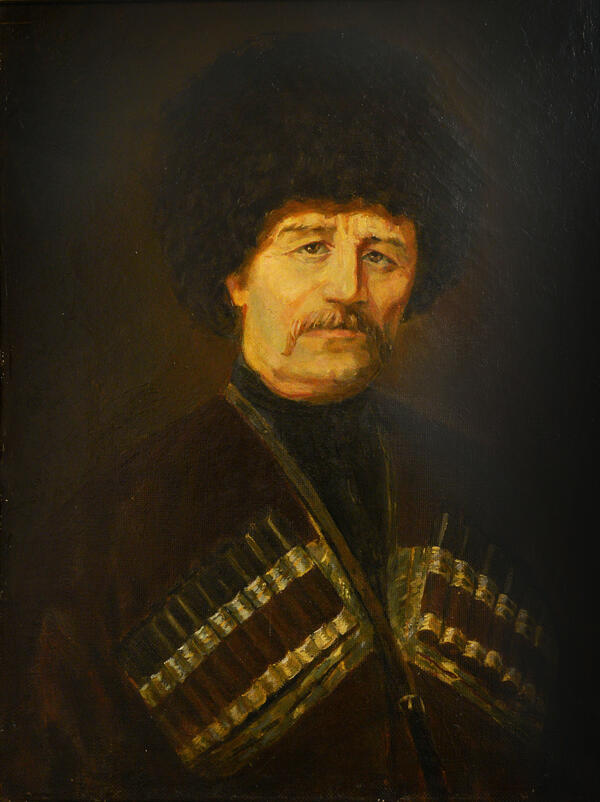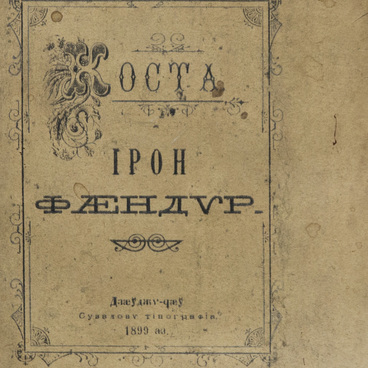Kosta Khetagurov was not only a famous writer, but also a talented artist. He painted portraits and landscapes, paintings about social issues, and even caricatures. Khetagurov’s paintings reflected the everyday life and folk culture of ordinary residents in the Caucasus Mountains.
Kosta Levanovich usually wrote to his friends and family. He tried to convey the smallest details of those he portrayed, while spent much time observing their faces, trying to get into his models' inner world. Khetagurov’s portraits were not distinguished by complex compositions. As a rule, he depicted people from the chest or waist up, in calm, natural poses against a neutral background.
On display in the museum’s exhibit is a portrait is displayed of Hussein (Georgiy) Baev, a Russian soldier, by Kosta Khetagurov. In his youth, Baev entered the service of Metropolitan Ion, and served as a Georgian translator for preachers. Later, he was sent to the Vladikavkaz fortification, and in 1845, Baev joined a group of Ossetian deputies who went to Saint Petersburg to express “loyal feelings” to Emperor Nicholas the First. In thanks for his loyalty to the Russian government, the Emperor granted “Hussein Baev of the Vladikavkaz District of the Kavdasard Society the rank of ensign with an allowance of one hundred rubles in silver per year.”
In September of 1854, Baev was sent to serve in the deputation at the office of the chief of the Vladikavkaz Military District, and in January 1862, he was appointed a deputy at the Department of the Military-Ossetian District for the Highlanders' People’s Court. Baev also became a deputy ‘of the farsalags and kavdasard Tagaur Society in the Commission for the Analysis of Personal and Land Rightsof the Natives of Terek Oblast’.
For his impeccable service, Baev was promoted to Second Lieutenant of the Militsia. He was awarded a bronze medal with the ribbon of St. Andrew in honor of the War of 1853-1856, a silver medal for the conquest of Chechnya and Dagestan in 1857 and 1859, and a cross ‘For Service in the Caucasus’.
Hussein Baev died in 1874. The soldier was burried in the wall of the Ossetian Church in Vladikavkaz. Neither the grave itself nor information about its exact location has been preserved to this day.
Kosta Levanovich usually wrote to his friends and family. He tried to convey the smallest details of those he portrayed, while spent much time observing their faces, trying to get into his models' inner world. Khetagurov’s portraits were not distinguished by complex compositions. As a rule, he depicted people from the chest or waist up, in calm, natural poses against a neutral background.
On display in the museum’s exhibit is a portrait is displayed of Hussein (Georgiy) Baev, a Russian soldier, by Kosta Khetagurov. In his youth, Baev entered the service of Metropolitan Ion, and served as a Georgian translator for preachers. Later, he was sent to the Vladikavkaz fortification, and in 1845, Baev joined a group of Ossetian deputies who went to Saint Petersburg to express “loyal feelings” to Emperor Nicholas the First. In thanks for his loyalty to the Russian government, the Emperor granted “Hussein Baev of the Vladikavkaz District of the Kavdasard Society the rank of ensign with an allowance of one hundred rubles in silver per year.”
In September of 1854, Baev was sent to serve in the deputation at the office of the chief of the Vladikavkaz Military District, and in January 1862, he was appointed a deputy at the Department of the Military-Ossetian District for the Highlanders' People’s Court. Baev also became a deputy ‘of the farsalags and kavdasard Tagaur Society in the Commission for the Analysis of Personal and Land Rightsof the Natives of Terek Oblast’.
For his impeccable service, Baev was promoted to Second Lieutenant of the Militsia. He was awarded a bronze medal with the ribbon of St. Andrew in honor of the War of 1853-1856, a silver medal for the conquest of Chechnya and Dagestan in 1857 and 1859, and a cross ‘For Service in the Caucasus’.
Hussein Baev died in 1874. The soldier was burried in the wall of the Ossetian Church in Vladikavkaz. Neither the grave itself nor information about its exact location has been preserved to this day.



